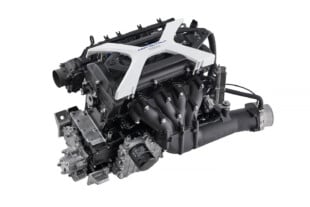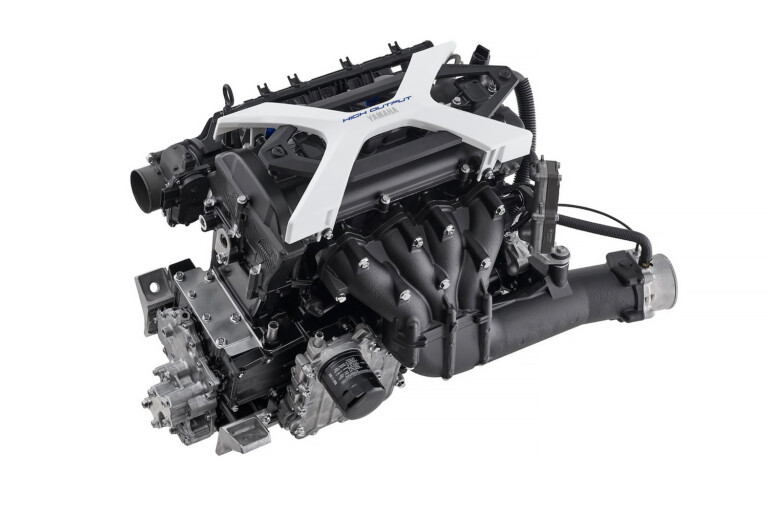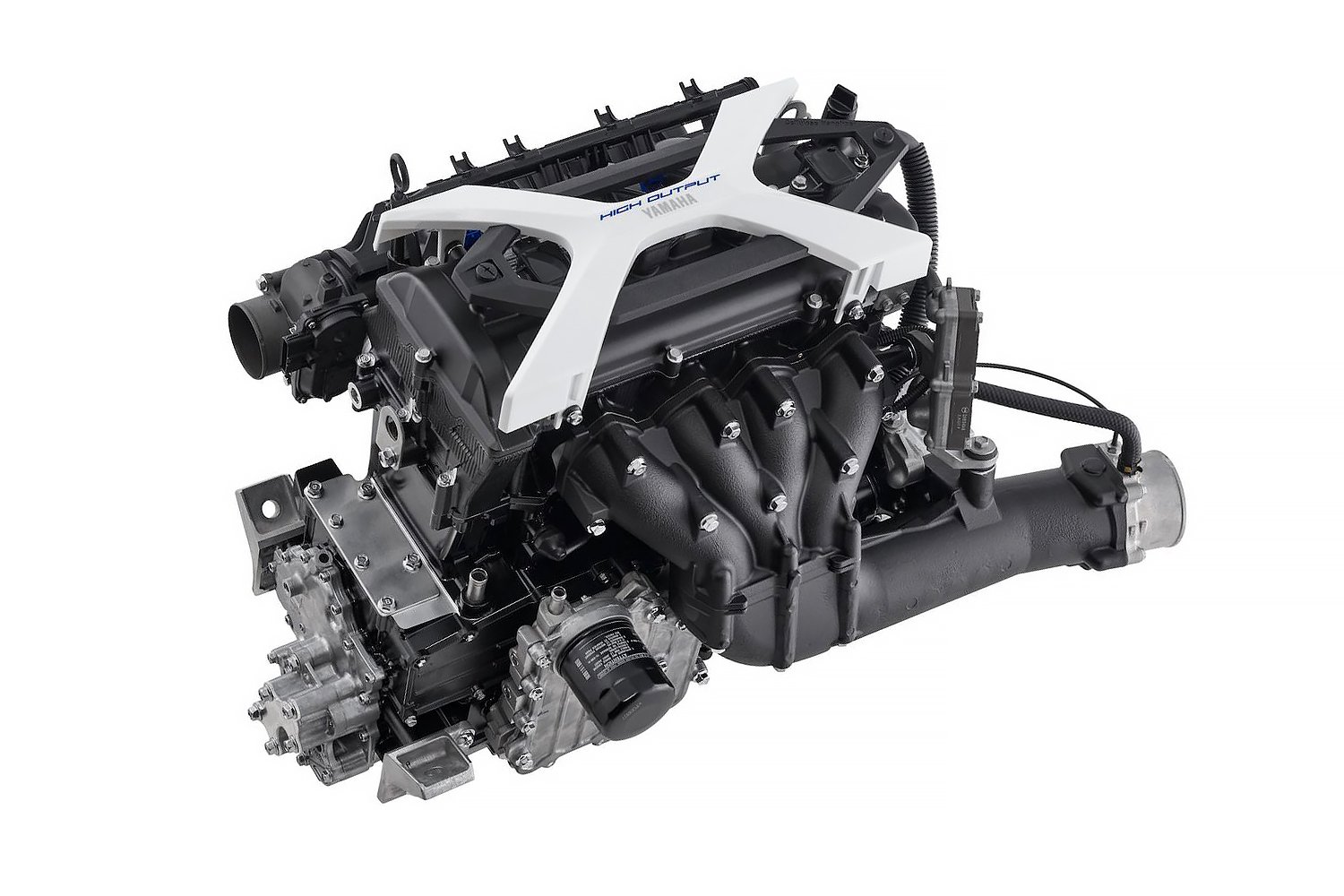Nowadays, the inline-five/straight-five engine is about as rare as it comes. But, up until recently, this wasn’t always the case, as many automakers produced vehicles with this oddly constructed powerplant well into the late 2000s and beyond.
Even though Henry Ford is credited for crafting the first straight-five motor worth a shakedown, Ford never put the design into production. And while Audi still holds the inline-five title as the first (and longest-lasting) automaker to market this motor, it was Mercedes-Benz that really made the most of the inline-five cylinder engine. We’ll get to that bit a little bit later on…
Oddly, for as “straightforward” as this motor seems, this design is one of the newest engine configurations to be sold on a global scale. Historically, the straight-five motor wasn’t even made available to the public until 1976, and the reason for this is mainly due to do the laggardly advent of affordable forms of fuel injection.

As you can see, a carbureted inline-five would have wildly inefficient fuel distribution. Photo Credit: driving 4 answers/YouTube
One Complicated, Carbureted Conundrum
Like a group of Mopar guys at a Corvette convention, inline-five motors do not play well with carburetors, and vice versa.
For starters, a single carburetor layout means that it will likely be located somewhere toward the center of the engine. But being that this engine design has an uneven number of cylinders, the intake manifold runners will be unevenly spaced. With its odd number of cylinders, unequal performance levels are found within each cylinder due to the carburetor’s dated fueling design. The result is an engine that does indeed run, but incredibly roughly.
Even two carburetors result in one carb feeding two cylinders, while the other feeds the remaining three. Ever try using two carbs on a single manifold, so that each carb somehow feeds 2.5 cylinders? Good luck monitoring fuel flow in that mess as well. The middle cylinder will likely get the lion’s share of the fuel, with both carburetors overfeeding it before hitting the other four with any leftovers.
Hooking up a duo of different-sized carbs won’t help either. Give each unit its own intake manifold, so that the larger one feeds three of the five cylinders, and the smaller one takes care of the remaining two could potentially work. But holy hell would keeping an equilibrium between both carburetors and each cylinder be a tuning nightmare.
So the only way out is to use five individual carburetors, which would actually mean a smooth-running engine. The downside is that the associated costs and tuning complexity of this configuration would be impossible to justify in a mass-produced passenger vehicle. Apparently, Audi decided to take the plunge decades ago and carbureted a small run of five-cylinder engines, only to give up and switch over to fuel injection.
This is intriguing because there have been plenty of carbureted inline six-cylinder engines over the years that have run perfectly fine on a carburetor design of some sort or another.
As the video above illustrates, the issue with carbureting inline-five engines has everything to do with their firing order. In contrast, most inline-six engines have a firing order of 1-5-3-6-2-4. Whereas a typical inline-five has a firing order of 1-2-4-5-3. Since the inline-six has one more cylinder, it never fires one cylinder next to another. By contrast, the inline-five fires off pots 1 and 2, followed by cylinders 4 and 5, before returning to piston number 3.

At the 1989 IMSA GTO in the USA, the Audi 90 quattro competed in its races with the most powerful five-cylinder Works engine. The turbocharged aluminum engine was a 2.2-liter high-performance unit specially designed for racing. It developed 530 kW (720 horsepower) at 7,500 revolutions per minute and delivered 720 newton meters (531.04 lb-ft) of torque at 6,000 rpm. Overall, the Audi 90 quattro IMSA GTO won seven races in the American touring car series in the 1989 season. Photo Credit: Audi
It’s All Good Ya’ll, I Got Five On It
Broken down to the basics, a 1-2-4-5-3 firing order’s primary forces (pistons moving vertically) are balanced. The same can be said for its secondary forces, when pistons move with fervor during their ascent, and slow down toward the lower end of their stroke. The reason for this is that an inline-five motor relies upon a rocking couple.
No, we aren’t talking about the lady with the beehive perm and her Bermuda shorts-sporting husband playing air guitar at the local biker bar.
This is purely a connecting rod oscillation fix and is why almost all five-cylinder engines have a balance shaft on board, as well as tougher engine and transmission mounts. From the uneven firing order to the rowdy rotational balancing act, this is just a riotous affair of a combustion and compression process from one end of the motor to the other.
However, get it right, and a cylinder should fire every time 144 degrees of crankshaft rotation is achieved. That breaks down to 36 degrees of overlap between each power stroke, thus causing a smooth, yet odd-sounding engine since exhaust strokes happen every 72 degrees. This results in a unique exhaust note, especially on something like a classic Audi rally car with a race exhaust.
Fuel Injected Big Shots and Belly Flops
Now from a mass-production standpoint, Volvo cars and Volkswagen/Audi automobiles may come to mind when you think of fuel-injected inline-five motors. However, there were quite a few other notable five-bangers out there that sold surprisingly well over the past few decades, some of which were still in production up until recently.
On the successful side, there was the older Ford Transit Van, which had a hulking 3.2L straight-five engine in it, which sold extremely well despite its odd engine configuration. Apparently, older Dodge Sprinter vans also came with a straight-fiver as well, which was more of a Daimler creation than anything at the time.
The Acura Vigor and 2.5L version of the 1990s Acura TL also sold well, for it was heralded as an affordable, powerful, and fuel-efficient alternative to the dated V6 design from that era. To date, this has been Honda’s only inline-five endeavor, and it was mounted longitudinally, which was unheard of in a Honda from that era.
As for Volkswagen, the German brand offered its Beetle/Golf/Rabbit/Jetta/Passat straight-five lineup for a hot minute, all of which sold well throughout much of the 2000s. But when modern turbocharged four-bangers proved to be more affordable, fuel-efficient, and performance-forward, VW ditched the inline design for its mass-production vehicles.
Volvo also saw great success after placing a transverse five-cylinder motor in the 850 way back in 1991. This engine would continue to be a staple of the Volvo brand, making it the powerplant of choice for almost everything the automaker offered all the way up until 2016 or so.
And then there was the abomination that was the Hummer H3, which shared the same underpowered inline-five with the GMC Canyon and Chevy Colorado from that era. It is probably best that we don’t discuss this side of the straight-five story in detail, as that design was quite the disaster, and pretty damn embarrassing.
Naturally, there were also all sorts of overseas exclusives, with Land Rover Defenders, and Discoveries, Lancia vehicles, Euro-exclusive Fords, and retro Audi and Alfa Romeo subcompacts and sports cars topping the list.
But probably the greatest inline-five success story of all was the utterly indestructible Mercedes-Benz 300D. These diesel-powered German tanks disguised as passenger sedans were so reliable and easy to repair that, to this day, you can still see them puttering around without problem… at least mechanically. Body rust on the other hand is a completely different story.

The Audi TT RS was one of the last vehicles to be equipped with an inline-five motor. A platform that I thoroughly enjoyed test driving and reviewing back in the day. Photo Credit: Micah Wright
The Final Farewell to the Inline-Five
The issue with almost all of these aforementioned engines was that while they did work, many of the smaller, turbocharged inline-four-cylinder engines of today create more power for about the same cost, often with better fuel efficiency gains. Hell, even modern turbo inline-six motors have better efficiency than the Audi TT RS.
All of the additional balancing that an inline-five engine requires, as well as its inherently expensive repair costs also make it quite the ugly and ungainly duckling.
In a pond that is brimming with turbo four-bangers, hybrids, and six-cylinder engines, there just isn’t room for something that is an expensive compromise on almost every level. Hence the announcement from Audi that it would be discontinuing the TT RS after the 2022 model year. This leaves just the RS 3 and the overseas exclusive RS Q3 as the only straight-five engines in existence today. Both of these are rumored to be slated for retirement as well, at which point would make the inline-five cylinder officially extinct on a global scale.























